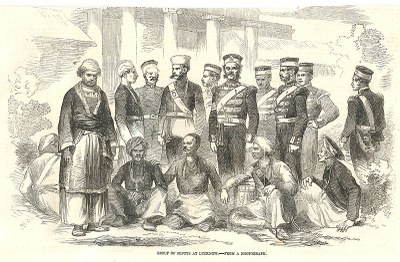Group of sepoys at Lucknow
erstellt von
—
last modified
2020-05-25T11:27:40+02:00
Unknown artist, Group of sepoys at Lucknow, from a photograph, from the Illustrated London News, Oct. 1857, original size/medium unknown; source: https://commons.wikimedia.org/wiki/File:Group_of_sepoys_at_Lucknow.jpg.
Transfer of Military Organizations and Institutions@Transfer of Military Organizations and Institutions@(BE)@freigabe
Warfare (1450–1789)@Warfare (1450–1789)@(ÜB)@freigabe

